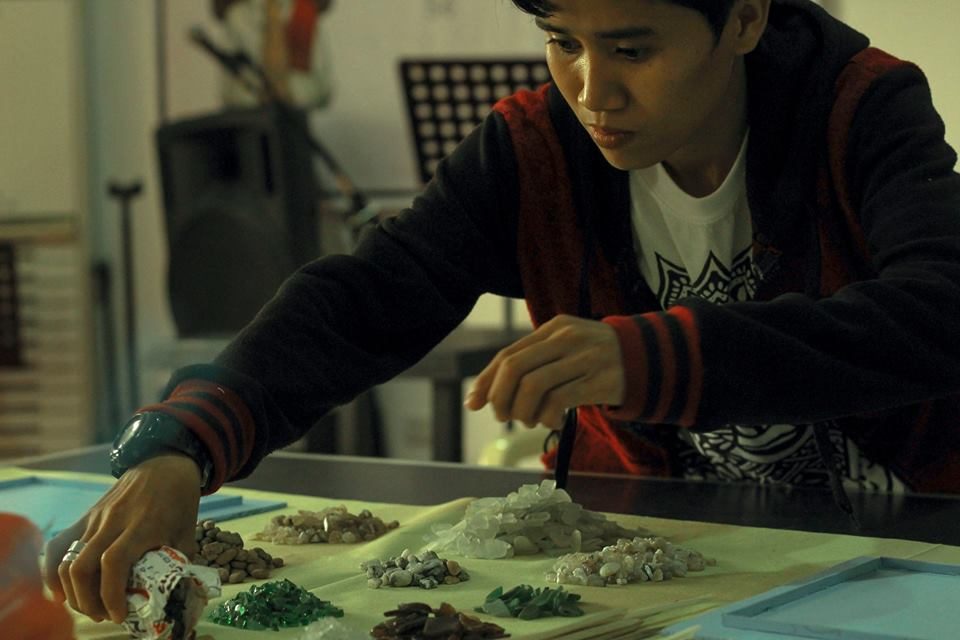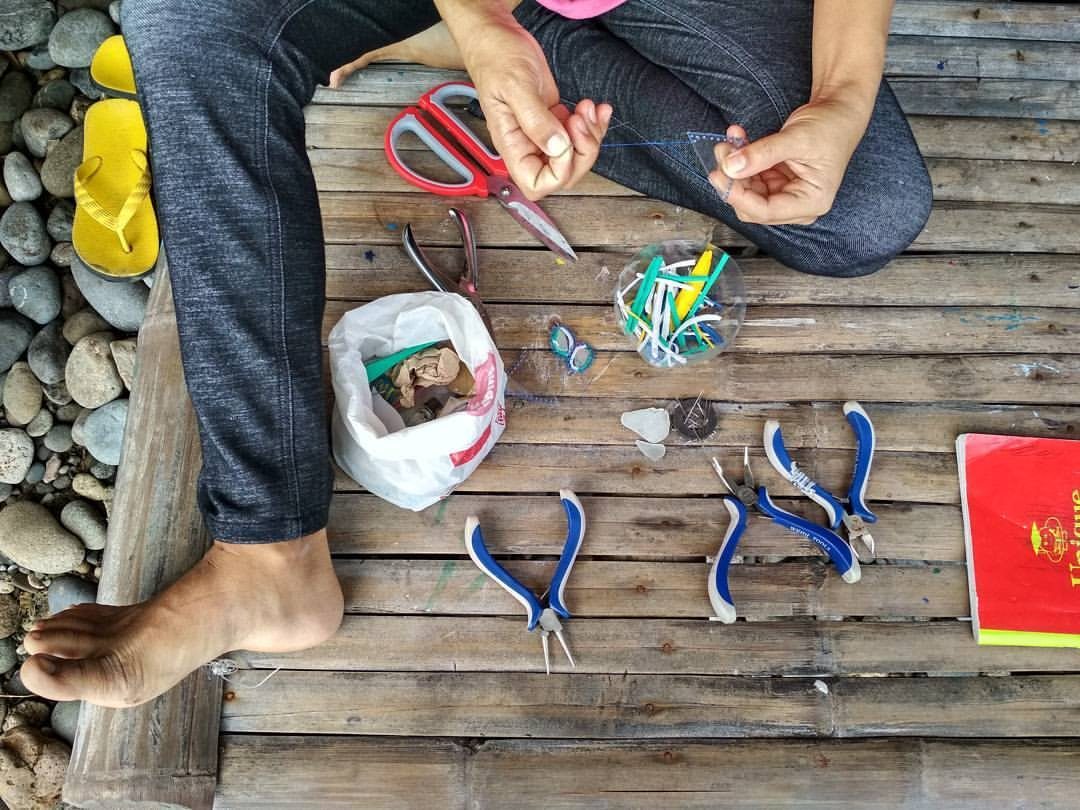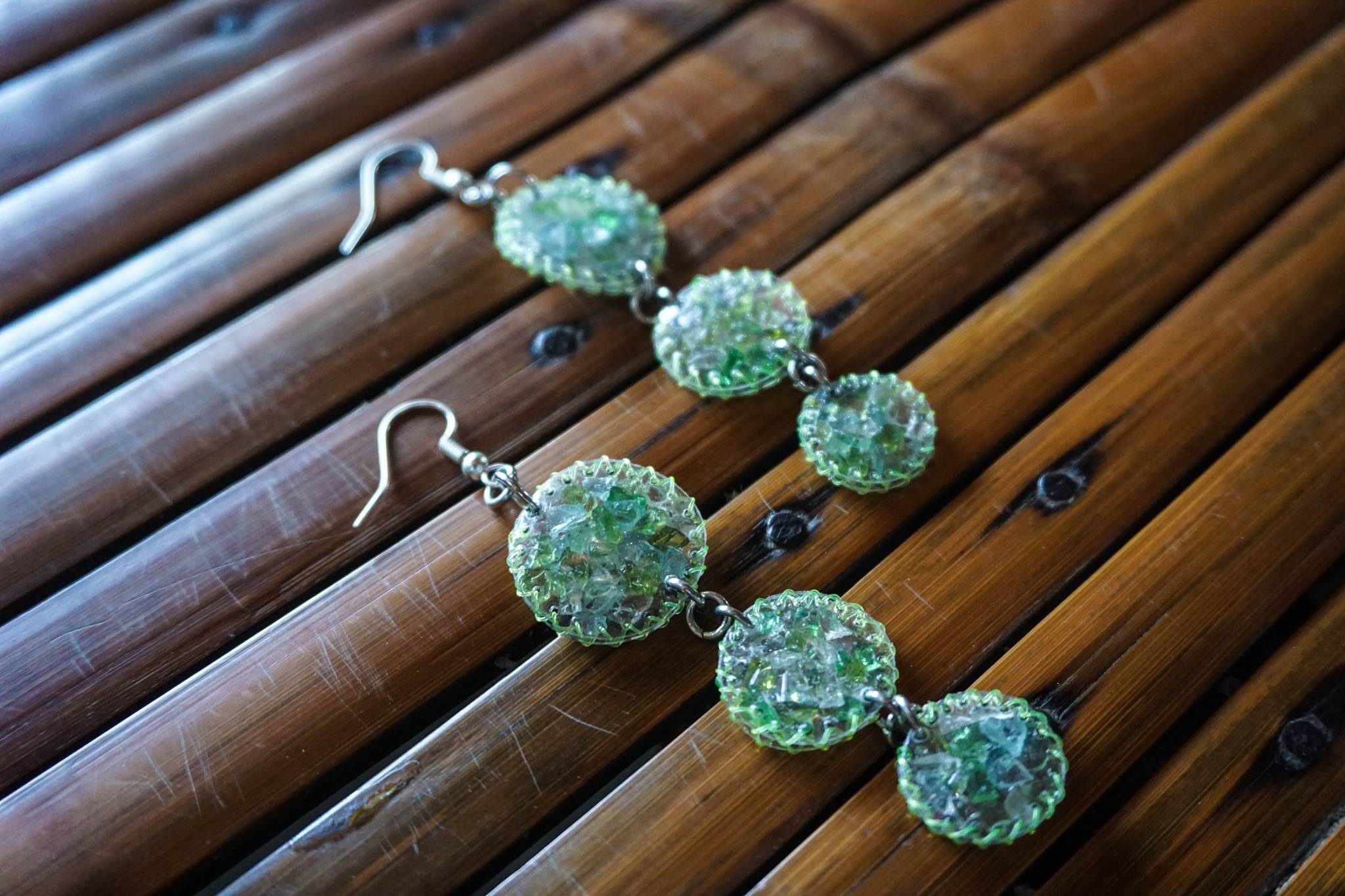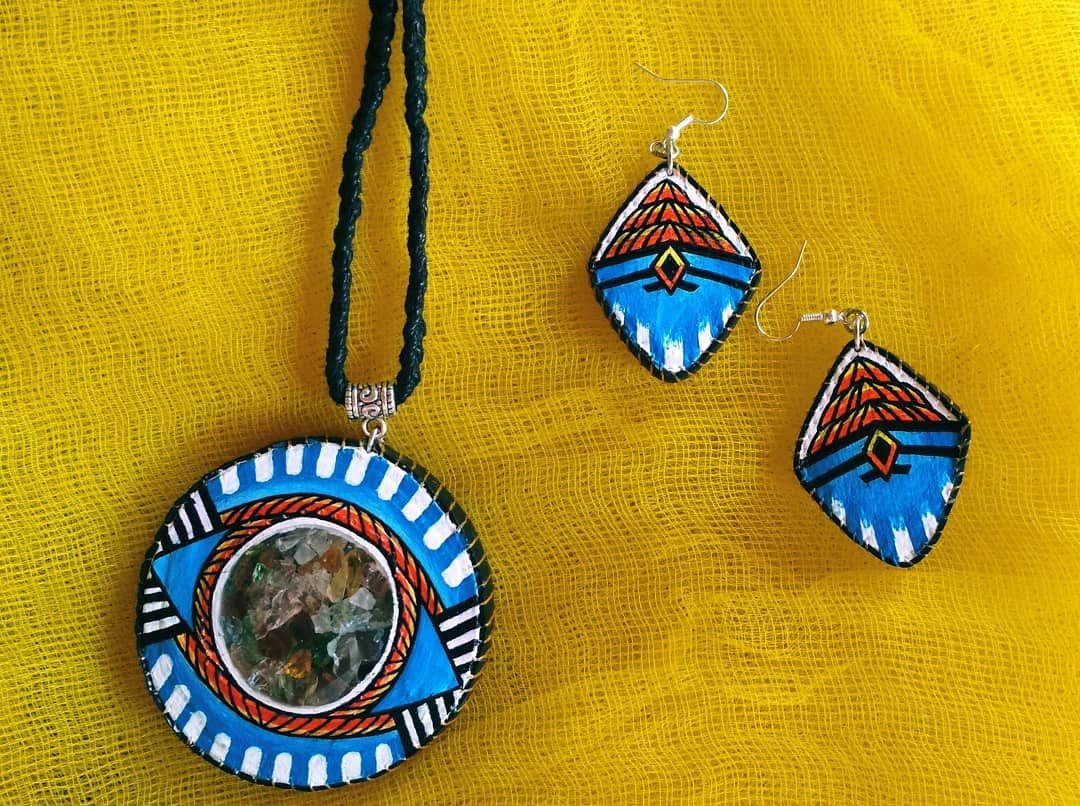SUMMARY
This is AI generated summarization, which may have errors. For context, always refer to the full article.

ILOILO CITY, Philippines – It’s become a familiar sight to see tourists leaving bottles by the beach shore for the waves to take, and discarded pieces of plastic and slippers peeking out from the sand.
But on the coast of San Joaquin, the “mermaid” women of Iloilo – humble protectors of the sea in their own right – comb the beach for trash, segregating and picking out materials they can reuse, and later crafting them into small treasures.
In the sleepy coastal town of Lawigan, San Joaquin – a two-and-a-half-hour commute from Iloilo City – a small group of women are contributing to the protection of the environment. They are crafting the trash they’ve collected along their shores into wearable art inspired by the region’s rich marine diversity.
It is no coincidence that their imprint has been named “Kataw,” after the merfolk of Visayan lore, the local counterpart of the mythical mermaid, the known guardians of the seas.
The group is part of the artist-led Alima Community, an initiative that seeks to empower marginal groups in rural Iloilo by engaging them in art.
The women artists of Kataw have designed and created vibrant jewelry – from eye-catching earrings to ornate necklaces and bracelets – all inspired by their unique insight and point of view, culled from years of living close to the sea.
They’ve also taken to naming their trinkets after vibrant indigenous marine life in their area – including pakol or triggerfish, and samok or clownfish, among others – as these fishes have served as their muses of sorts.
Sanctuaries
San Joaquin town has proven to be fertile ground for the endeavor. The town has a string of 15 consecutive marine protected areas (MPAs) along its 25-kilometer stretch of coastline. Each of these MPAs have a two-hectare core “no take” zone where fishing is prohibited and human activity is limited. The local government has also implemented a regulated buffer zone in each of these sanctuaries.
The closest to the homes of the Kataw artists is the Bugnayan Marine Sanctuary, spanning from barangay Lawigan to neighboring Igcadlum.
Ghing Meñeza, 38, a Kataw artist and a long-time resident of seaside Lawigan, shared that her husband used to be one of the caretakers of these MPAs. She added that beach trash has been reduced in the last couple of years due to the efforts of the local government, but pollution along their shores is far from gone.
Ghing revealed that picking up trash while walking along the beach near her home would still yield at least two large plastic bags full of litter in just an hour or two.

A former factory worker in Manila, Ghing said that at first she was willing to join Kataw mostly for the additional income. Her husband, now a carpenter, was the only breadwinner in their household back then. But through the initiative, Ghing found a renewed sense of purpose and empowerment.
“I never expected I would be able to come up with the designs people would be able to love and appreciate,” Ghing said in Hiligaynon.
“Seeing the product of my efforts and my hands being worn for the first time was really a proud experience for me. Because of Kataw, I no longer underestimate myself, it has lent me self-confidence I never knew I had deep inside me,” she continued in Hiligaynon.
Ghing’s design named “Sorahan” after the surgeon fish native to San Joaquin waters, is one of the best sellers in the Kataw store. They are stud earrings made of cut-up rubber slippers and discarded rope, with its lively pattern mimicking the fins and undulating lines on the sides of its namesake fish. Meanwhile, her “Samok” takes inspiration from the distinct orange, black, and white colors of the clownfish.
Ghing said that she has already made and sold around 100 pairs of her signature “Sorahan” earrings, with her earnings from Kataw going to milk for her two-year-old child and rice for their household.
“My colorful pieces are motivated by the light that my two children give me,” she said.
“I always think about my children when I create my designs; this is for their welfare. But I’m happy that by persevering for my children, I’m also contributing to saving the environment. I want them to still be able to enjoy the clean beaches of San Joaquin when they grow up,” she said.
Jen-jen Sargento, 23, is the youngest in the group. Kataw has allowed her to explore her innate artistry to beat her own hesitation and anxiety.
“Before Kataw, I was unmotivated. [I] had no real idea what I wanted to do in life,” Jen-jen said in Hiligaynon.
“After joining one of the group’s workshops, I knew I found my place. I learned to explore and express my voice in art – in not just jewelry – but other mediums as well,” she said in Hiligaynon.
Through Kataw, Jen-jen found her creative voice and overcame her rut. With the encouragement of the Alima Community, Jen-jen is now a gallery assistant at Eskinita Art Gallery of Manila-based artist Alfredo Esquillo in Iloilo’s iconic Molo Mansion. She continues creating jewelry pieces in her free time.
Jen-jen shared that when her schedule permits, she still regularly trawls the seaside of her hometown for litter, looking out for sea glass and discarded slippers especially, for use in her wearable art pieces.
Jen-jen’s “Walo-walo,” named after the venomous seasnake, glistens as it evokes the reptile’s bright eyes, incorporating lustrous seaglass and a PET bottle enclosure. The seams are handstitched using discarded plastic cord.

With her “Himbis” earrings, she cuts rubber slippers and paints them to resemble colorful scales.
But arguably, Jen-jen’s most compelling work is her “Ugsad” necklace. Inspired by her interest in mandala designs, she uses seaglass to conjure both the image of a full moon and an awe-inspiring fish eye.

Storied pieces
“In a world of mass manufacturing, we are going back to the unique art made by hands. Every piece goes through a slow and intricate journey,” explained spoken word poet and installation artist Kristine Buenavista, one of the founders of Alima Community.
Buenavista explained that their name is derived from the Kinaray-a word for “hand” because each piece of their jewelry is handcrafted, so often no two pieces are alike. She leads the initiative with co-founders Marrz Capanang and Jonn Laserna, both visual artists.
“As our commitment to empower, we immerse in the life of the village to observe the creative process of our artists and to listen and experience their stories. All 3 of us found a deeper meaning in creating together. All 3 of us fell in love with the essence of working closely with ordinary makers as they blossom into empowered artists,” Buenavista said
“In supporting Kataw, you’re not only wearing a beautiful statement piece and helping the environment, you’re wearing a story from the fringes of Iloilo, you’re wearing someone’s journey of self-discovery, you’re wearing the immutable stories of these empowered women,” she added.
Mother of 7 Lala Padrilla, another Kataw artist, had written a poem to explain the inspiration behind her “Dagsa” earrings – made out of driftwood and discarded nets from local fishermen. Lala sells vegetables and calamansi in their town, sometimes vending them on foot, but Kataw has lent a platform for her voice.
“Driftwood seen of little value, trash and debris washed ashore by the ebb and flow of the sea,” goes her poem in from her native Hiligaynon. “But holding you in my hand, there I see your potential. Holding you up, I hope others see too your untold beauty.”
Handmade and “heartmade” in Iloilo, you can support Kataw and check out their women artists’ designs on alimacommunity.com. – Rappler.com
Add a comment
How does this make you feel?
There are no comments yet. Add your comment to start the conversation.